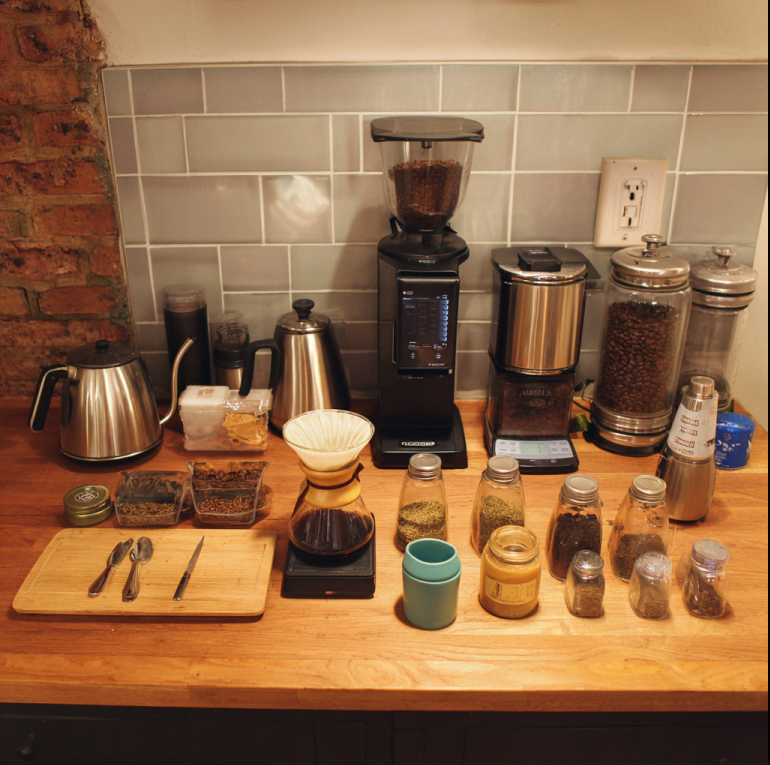As a coffee fan, we know that you want to brew better at home by avoiding these common pitfalls — coming straight from us, a Texas roastery that lives for great coffee.
Whether you’re dialing in a daily pour-over or firing up the French press, a few tiny adjustments can make your cup go from “okay” to “oh wow.” Below are five of the most common mistakes we see—and easy fixes you can apply today. We’ve included suggested roasts from our lineup so your next brew starts with the right foundation.
1) Using Beans Past Peak Freshness
Stale beans mute sweetness and aroma. Freshly roasted coffee typically peaks between days 5–21 after roast (stored airtight, away from heat/light). If your cup tastes flat, check the roast date and storage.
Fix: Buy fresh, small batches and store in a sealed container. Try a bold, complex roast like Rebel Roast for rich body that still sparkles when fresh.
Want to learn how to keep your beans tasting their best? Read our guide on how long roasted coffee beans really last and how to store them for maximum flavor.
2) Inconsistent Grind Size
Grind is the throttle of extraction. Too fine = bitter/astringent. Too coarse = sour/under-extracted. Consistency matters more than brand of brewer.
Fix: Use a burr grinder. For pour-over aim for medium-fine (like table salt); for French press, go coarser (like coarse sea salt). If your brew is sharp and sour, go finer. If it’s harsh and bitter, go coarser.
Roast to try: Bruja Brew—balanced and nuanced, great for learning how grind tweaks change sweetness and clarity.
Want to dive deeper? Check out our Ultimate Coffee Grind Size Guide for detailed comparisons across brew methods and grind levels.
3) Guessing the Coffee-to-Water Ratio
“A little of this, a splash of that” makes inconsistent coffee. Ratios give you repeatable, dial-able results.
Fix: Start at 1:16 (1 gram coffee to 16 grams water). Example: 25g coffee → 400g water. Adjust for taste: sweeter/stronger? 1:15. Lighter/juicier? 1:17–1:18.
Roast to try: Rock Crawler — a sturdy, adventure-ready profile that holds up beautifully from 1:15 to 1:18.
Need help mastering the perfect ratio? Visit our guide on how much coffee to use for every brew method.
4) Brewing with the Wrong Water (or Temperature)
Water is 98%+ of your cup. Super-hard or heavily chlorinated water flattens flavor; too cool water under-extracts; too hot scorches delicate notes.
Fix: Aim for 195–205°F (90–96°C). If your tap tastes off, use filtered water. You’ll taste the difference in fruit, chocolate, and florals immediately.
Roast to try: Bruja Brew to highlight delicate aromatics when your water and temp are on point.
If bitterness creeps in, see our guide on why coffee tastes bitter (and how to fix it).
5) Skipping the Bloom (or Rushing the Process)
Fresh coffee releases CO2 that can repel water and hinder extraction. A quick bloom saturates grounds evenly for better sweetness and balance.
Fix: For pour-over, add ~2–3x the coffee weight in hot water, wait 30–45 seconds, then continue in slow, even pours. For French press, stir to break the crust before plunging for uniform extraction.
Roast to try: Rebel Roast — big aromatics that really pop when you nail the bloom.
Want to master this process? Our pour-over guide breaks down each step with barista-level clarity.
Quick Brew Blueprint (Save This!)
- Ratio: 1:16 (adjust to taste)
- Grind: Medium-fine for pour-over, coarse for French press
- Temp: 195–205°F (90–96°C)
- Bloom: 30–45s with 2–3x coffee weight
- Total time: 2:45–3:30 pour-over; 4:00 French press
Recommended Roasts
- Rebel Roast — bold, smooth, crowd-pleaser.
- Bruja Brew — nuanced and balanced; perfect for dialing in grind.
- Rock Crawler — rugged flavor for mornings that need traction.
Repping the flavor? Check out the American-Made Rebel Roast T-Shirt to back your brew with some attitude.
FAQ: Brew Better at Home
Why does my coffee taste bitter?
Usually over-extraction (grind too fine, too hot water, or too long contact time). Go coarser, reduce brew time slightly, or lower temp toward 195°F. See our guide on bitterness for more detail.
Why does my coffee taste sour or thin?
Under-extraction (grind too coarse, too cool, or too fast). Go finer, pour more slowly, or raise temp toward 205°F.
What’s the best coffee-to-water ratio?
Start at 1:16 (e.g., 25g coffee to 400g water). Adjust stronger to 1:15 or lighter to 1:17–1:18. Read more in our Perfect Brew ratio guide.
Do I need to grind right before brewing?
Yes. Grinding fresh protects aromatics and sweetness. Pre-ground goes stale quickly and loses the good stuff.
Should I bloom my coffee?
For fresh beans, yes—30–45 seconds with 2–3x the coffee weight in water helps release CO2 and improves extraction.
What water should I use?
Filtered water in the 195–205°F range. Avoid very hard or heavily chlorinated water; it dulls flavors.
Keep Learning & Brewing Better
Want to go deeper on technique? Explore more tips in our Brew Better posts, or browse the latest on our blog.

0 comments